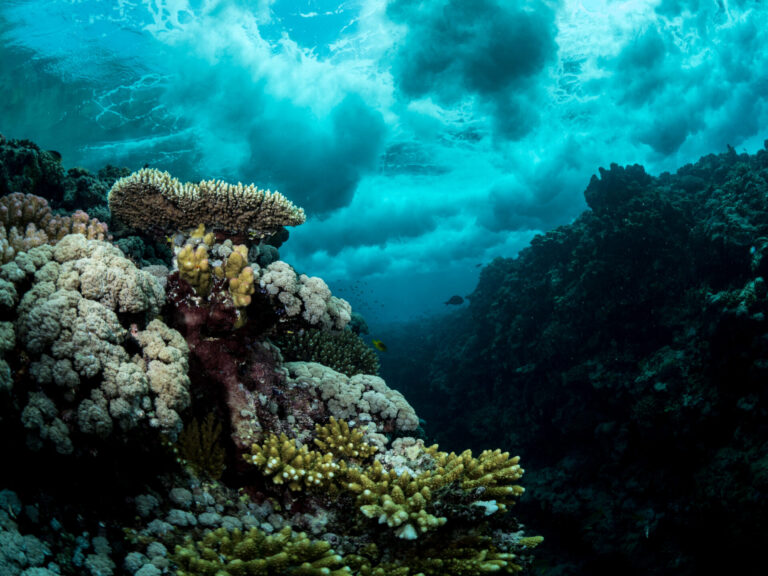Marine Science
A different slant of light
Giant clams manipulate light to assist their symbiotic partner.

KAUST researchers at the Red Sea Research Centre and the Photonics Laboratory have discovered another way that iridocytes help the symbiont to photosynthesize. © 2020 KAUST
KAUST researchers at the Red Sea Research Centre and the Photonics Laboratory have discovered another way that iridocytes help the symbiont to photosynthesize. © 2020 KAUST
Special cells in giant clams shift the wavelength of light to protect them from UV radiation and increase the photosynthetic activity of their symbionts, shows research from KAUST that was originally intended as a photonics investigation.
Like corals, giant clams are important players in reef ecosystems and live in symbiosis with photosynthetic Symbiodiniaceae algae. The clams also have special cells, known as iridocytes, that can manipulate light via layers of nanoreflectors within each cell. Earlier work has shown that these iridocytes scatter and reflect light to increase the photosynthetic efficiency of the Symbiodiniaceae algae.
Now, a team of marine scientists and electrical engineers at KAUST have discovered another way that iridocytes help the symbiont to photosynthesize. The researchers studied the morphology and optical characteristics of iridocytes in the giant clam Tridacna maxima and found that they absorb UV radiation and re-emit it as longer wavelengths that are photosynthetically useful.
Ram Chandra Subedi, one of the study’s authors, explains that the iridocytes contain alternating layers of high refractive index guanine crystal and lower refractive index cytoplasm. Compressing and relaxing these layers enables the cell to tune its effect on light. As a result, “the guanine palettes not only reflect harmful UV radiation but also absorb it and emit light at higher wavelengths that are safe and useful for photosynthesis,” he explains.
Blockphase scanning electroscope microscopy image of cross-sectioned Tridacna maxima mantle tissues, showing the symbiotic algae (green arrows) and, in close proximity, the embedded iridocyte cells (blue arrows). © 2020 Rossbach et al.
This increases the amount of photosynthetically active radiation available to the algal symbiont and also helps protect both the clams and algae from UV radiation. This photoprotective effect enables giant calms to live in very shallow tropical waters where there is enough light for photosynthesis but also potentially harmful UV radiation levels.
This may also explain the mantle colors of giant clams. The idea is that the vibrant colors of giant clams are not due to optical differences in the tissue, but rather differences in the distribution or abundance of symbionts relative to iridocytes in each individual. “It’s just a hypothesis,” explains lead author Susann Rossbach, “but it’s the most reasonable explanation we have about why the clams have different colors.” Whether or not the differences in color have functional consequences remains an open question.
Rossbach says that this was a curiosity-driven project to see if the iridocytes had optical properties that might be useful in photonics technologies. “It wasn’t initially about answering a biology question, but in the end it explained a lot about this symbiosis and opened up new questions in biological photonics,” she says. These findings have also led to new optoelectronic applications based on iridocytes, though they have not yet been published.
References
- Rossbach, S., Subedi, R.C., Ng, T.K., Ooi, B.S. & Duarte, C.M. Iridocytes mediate photonic cooperation between giant clams (Tridacninae) and their photosynthetic symbionts. Frontiers in Marine Science (2020). article
You might also like

Marine Science
A place to trial hope for global reef restoration

Marine Science
Reef-building coral shows signs of enhanced heat tolerance

Marine Science
Plastic-munching bacteria found across the seven seas

Marine Science
AI reveals the universal beauty of coral reef growth

Marine Science
Tiny crabs glow to stay hidden

Marine Science
Mass fish deaths linked to extreme marine heatwave in Red Sea

Marine Science
Weeding out the secrets of Red Sea macroalgae

Bioscience




